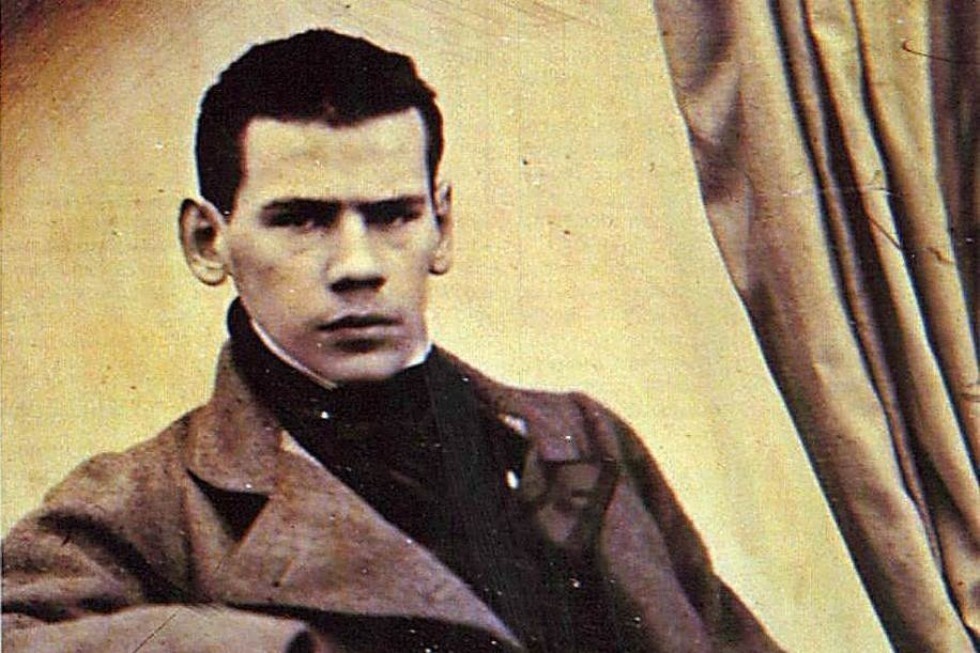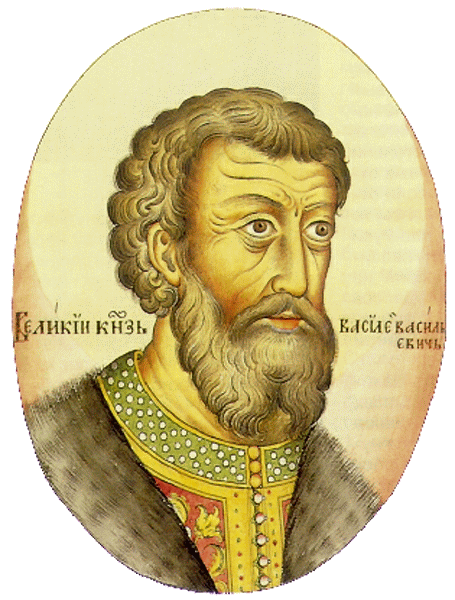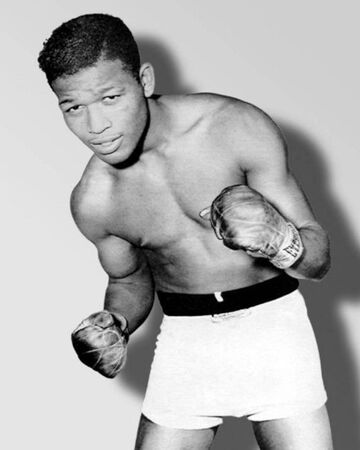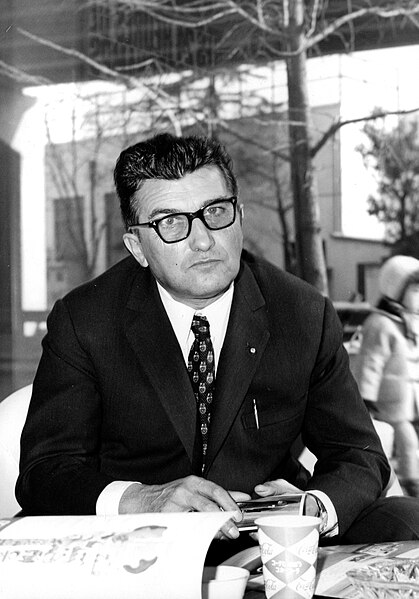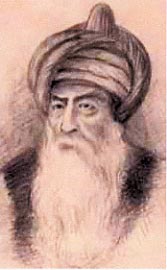|
|
Post by Woland on Jun 5, 2020 11:23:58 GMT -5
Ingmar Bergman (1918-2007) is Sweden's most famous film director and an icon of world cinema. Born in Uppsala to a strict Lutheran minister, his life changed when he traded his tin soldiers for his brother's magic lantern, the early image projector allowed him to experiment with lighting and puppets which birthed his love for the theatre. As a young man he attended a Nazi rally in Germany, failed to complete his studies at University and fell out with his parents. His plays earned him an assistant director gig at a local theatre, in 1942 he was allowed to direct one of his own plays, Svensk Filmindustri offered him a role reworking scripts, his directorial debut arrived in 1946 with "Crisis", the start of a very productive directing career. Over the course of the 50s and 60s his style took shape along with his favourite collaborators on his films: Sven Nykvist the cinematographer responsible for the luminous b&w photography in "Winter Light" along with the suffusive colour in "Cries and Whispers"; his leading actresses Harriet Andersson, Bibi Andersson, Ingrid Thulin and Liv Ullmann; his leading men Gunnar Bjornstrand, Erland Josephson and the Hollywood legend Max von Sydow.
His first big international success was the fluffy romantic comedy "Smiles of a Summer Night" in 1955, in retrospect a completely un-Bergmanesque movie closer to Jean Renoir's "Rules of the Game". Arguably his most famous two works came 2 years later, The Seventh Seal and Wild Strawberries. The oft-parodied former pitted an anachronistic Knight of the Crusades during the black death playing chess with Death, Bergman's most direct film on one of his most favouritest of themes: life in a Godless world. Wild Strawberries is the slightly softer film, almost a passing of the Swedish director's baton. In the lead role Victor Sjostrom (legendary silent film director of "The Wind" and "He Who Gets Slapped), ruminating on his past memories, his dreams, hopes and fears enroute to receiving an honourary degree.
He kicked off the 60s with nods to fellow titans of world cinema Akira Kurosawa (the Virgin Spring) and Federico Fellini (All These Women). His loose "faith trilogy" further explored themes of alienation, lack of communication along with notions of faith. His greatest and most experimental work "Persona" has provoked endless interpretations and analysis on its meaning, Bergman himself said it was the moment he fell in love with Liv Ullmann.
During the 60s he began to pare his actors down, his films became more intimate, more like filmed theatre while exploring human relationships. In the 70s he still churned out emotionally charged films, but in 1976 he was arrested for alleged tax evasion which later proved to be false, the humiliation of being arrested sent Ingmar into a nervous breakdown and deep depression, he vowed never to work in Sweden again, but in 1982 he returned to make his alleged swansong movie "Fanny and Alexander", a 5 hour long Dickensian tale based on Bergman's childhood memories. Afterwards he continued to make TV movies; "Saraband" would be his last film released in 2003, a sequel to "Scenes from a Marriage".
His personal life was a complete mess, his first 4 marriages ended in divorce until he found his soulmate Ingrid von Rosen. In total he had relationships with 3 of his leading actresses, 9 children in total (one with Liv Ullmann). While balancing his film career he was also a Theatre Director in Stockholm in the 60s, Bergman once said "theatre is my wife, cinema my mistress." He died in 2007 on the same day as Italian director Michelangelo Antonioni.
|
|
|
|
Post by Woland on Jun 6, 2020 18:36:44 GMT -5
Ilya Repin (1844-1930) was born in Chuguyev, Russian Empire (now Ukraine), his father was in the Imperial Army while his mother was a teacher. A precocious talent, he worked in an icon painting workshop before entering the Imperial Academy of Arts. It was here he met the influential critic Vladimir Stasov and the painter Ivan Kramskoi, an acquantance with art collector Pavel Tretyakov earned him plenty of commissions to keep him going. His travels across Europe and Russia throughout his life gave him all the inspiration to paint some of the greatest paintings of the 19th century, his level of fame in painting akin to Leo Tolstoy in literature. At the turn of the century he was an outspoken critic against the Tsarist repressions and bloodshed, he moved to Finland about an hour's train ride from St. Petersburg. his later work never quite achieved the acclaim of his late 19th century masterpieces. After he died in 1930, his home became a museum, the town's name changed to Repino in honour of him.
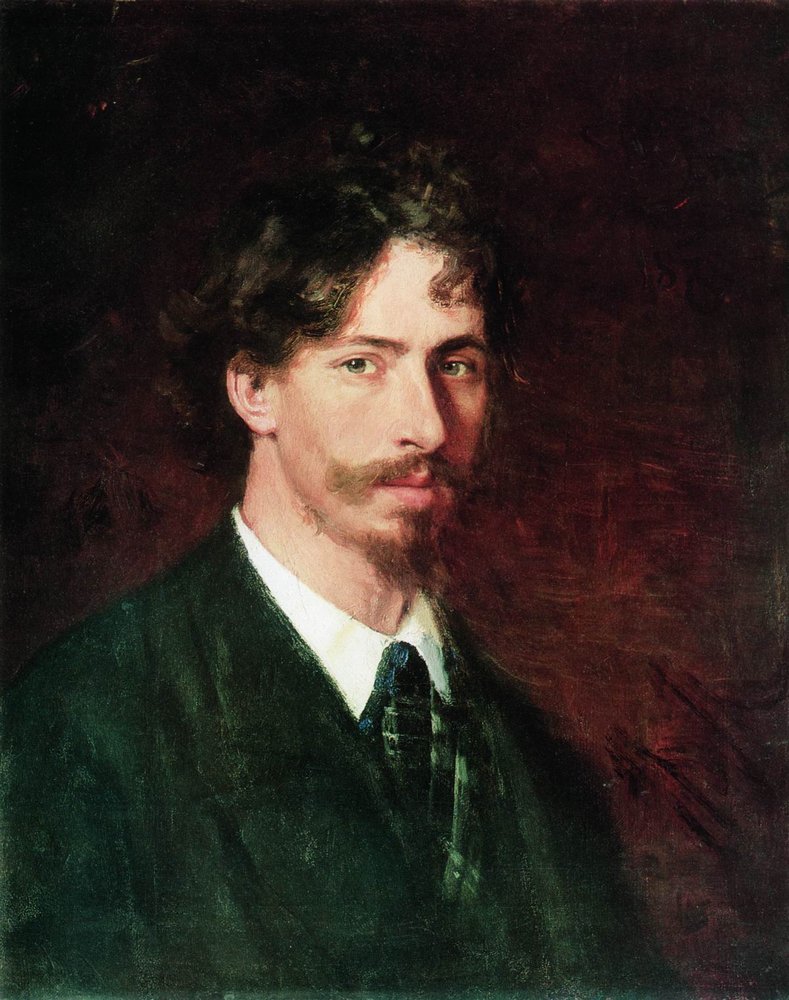 |
|
|
|
Post by Windischer on Jun 8, 2020 10:12:17 GMT -5
Anton Laščak, also known as Antonio Lasciac (1856-1946) was a Slovene-Italian architecht, famous for the buildings he planned in Egypt, Constantinople and elsewhere. For his work Khedive Abbas II of Egypt awarded him the title of beg.  |
|
|
|
Post by Woland on Jun 8, 2020 10:48:10 GMT -5
Vardges Sureniants (1860-1921) is considered the father of Armenian Historical painting, despite only having one art exhibition in his lifetime he was highly regarded by his artistic peers. Born in what is now modern-day Georgia, he studied art in Moscow and architecture in Munich. On a trip to Italy in his 20s he studied Armenian manuscripts and architecture, published articles on Armenian architecture; around this time he also translated Shakespeare's "Richard III", visited Persia and taught art history in his beloved Armenia. In the mid 1890s Sureniants painted a number of works in response to the Hamidian Massacres. In the early 1900s he began illustrating the works of Pushkin, Oscar Wilde and Ferdowsi among others, during the later Armenian Genocide he painted portraits of the survivors while founding the Armenian Artistic Society in Tiflis with his fellow Armenian painters. In 1917 he was commissioned to decorate an Armenian Cathedral in Yalta on the Black Sea; over the course of several years he contracted a grave illness and died. He was buried in the grounds of the very church.
Russian artist Ilya Repin:
Russian art critic Vladimir Stasov:
Armenian painter Martiros Saryan:
|
|
|
|
Post by Woland on Jun 9, 2020 12:11:31 GMT -5
Vasily II of Moscow (1415-1462) reigned as Grand Prince of Moscow from 1425 until his death. As a kid he found powerful allies in his grandfather Vytautas the Great (Grand Duke of Lithuania) and Metropolitan Photius, head of the Church of Moscow. When both men died, Vasily's scheming uncle Yuri of Zvenigorod received the blessing of the Golden Horde to take the Muscovite Throne, sparking a damaging internecine power struggle. At one point Vasily was taken prisoner only to be released 4 months later, after Yuri grabbed the throne he had Vasily sent to the town of Kolomna, Vasily proceeded to build support to retake the throne, greatly aided by Yuri's unpopular rule. Vasily II would reclaim the throne, but Yuri's two sons Vasily the Cross-Eyed and Dmitry Shemyaka would continue their father's fight.
The two brothers defeated Vasily's forces allowing Vasily the Cross-eyed to take the throne, Dmitry colluded with Vasily II to overthrow his brother who was later captured and blinded. During this time the Golden Horde was breaking up, successor states formed in Kazan, Astrakhan, Crimea and Siberia. The Kazan Khanate beseiged Moscow in 1439, Vasily II's attempts to relieve the siege were thwarted and he was taken prisoner, an exorbitant ransom gained his freedom, by which point Dmitry Shemyaka gained control of Moscow. As punishment Dmitry had Vasily II exiled and blinded (hence Vasily II's nickname "The Blind). Fearful of Vasily II's popularity in Moscow, Dmitry recalled him from exile and gave him control of Vologda, another chance for Vasily II to rebuild support and retake the throne in 1450.
With the internecine conflict virtually over and Moscow's rule virtually established over the rest of the principalities, the blind Vasily II announced his son Ivan III as co-ruler, strengthened his control over the other powerful states of Novgorod, Pskov and Suzdal. His death in 1462 set the stage for his son the future Ivan The Great to bolster Moscow's power over the Russian lands.
|
|
|
|
Post by Woland on Jun 10, 2020 18:13:49 GMT -5
Aram Khachaturian (1903-1978) was an Armenian composer born in Georgia. Growing up in a multicultural environment rich in folk music provided the musical upbringing Aram needed to compensate for his lack of formal musical training. Moving to Moscow in his late teens, he considered a career in medicine before enrolling at the Moscow Conservatory. From the 1930s onwards he would become one of the Soviet Union's greatest composers, a national treasure in Armenia. His most famous piece "Sabre Dance" is a staple in popular culture, instantly recognisable.
|
|
|
|
Post by Woland on Jun 11, 2020 19:05:50 GMT -5
Sugar Ray Robinson (1921-1989) is often considered the greatest boxer of all time. It's often said the "pound-for-pound" ranking was invented just for him. Born in Georgia, he moved to Detroit then New York in his youth, getting into trouble with local gangs before entering amateur boxing in his late teens, winning the Golden Gloves at featherweight and lightweight. His amateur record stood at 85-0. 69 by knockout, 40 of those in the first round.
Robinson turned professional in 1940, he won his first 40 fights before losing his rematch to Jake La Motta in 1943, three weeks later Robinson would avenge that loss before serving 15 months in the Army. By 1946 he only had 1 loss and 1 draw on his record compared to 73 victories, later that year he won the Welterweight title, a belt he'd hold for the next 5 years, moving up to middleweight for the money and his difficulty cutting weight. In late 1950 he won 5 fights in the space of a month in Europe, a couple months afterwards he'd have his 6th and final fight against Jake La Motta, nicknamed the St. Valentines Day Massacre. For the first half of the fight La Motta was ahead, but in the later rounds Robinson took over as La Motta tired (he was struggling to keep weight down too), in the last 2 rounds La Motta was virtually defenceless, Robinson unleashed such a beating but Jake would not go down, the referee stopping the fight in round 13. Contrary to the movie "Raging Bull", La Motta was put on oxygen for 30 minutes before being taken to the hospital. La Motta would later joke he fought Sugar Ray so often he almost got diabetes.
Later that summer Robinson embarked on another European tour in a pink Cadillac, fighting in France, Switzerland, Belgium, West Germany, Italy before losing his middleweight crown in London to Randolph Turpin. In the rematch in New York Robinson knocked him out in the 10th round. In 1952 Robinson had to retire in the 13th round of his bout with light-heavyweight Joey Maxim, the oppressive heat forced the referee to be replaced halfway through the contest. After that loss Sugar Ray Robinson retired from boxing with an outstanding record of 131-1-1-1. A short-lived show business career forced him back into the ring in 1955.
Robinson would have 14 more fights until the end of the 50s losing 3 of them; the third loss to Carmen Basilio was avenged a year later in 1958, making Sugar Ray Robinson a 5-time Middleweight Champion of the world, an unheard of feat. In 1960 he would lose the title again and spend the next 5 years chasing it back, losing more often until finally hanging up his gloves in 1965, ending a 25 year boxing career with 201 fights. 174 wins (109 by KO), 19 losses, 6 draws and 2 no-contests.
After retiring from boxing Sugar Ray Robinson admitted he'd already spent his $4 million in career earnings, made some TV appearances and was later diagnosed with Alzheimer's disease. His dazzling footwork, awesome speed, vicious punching power and versatile style made him an icon in and out of the ring. In 1947 Sugar Ray was about to make his first welterweight title defence against Jimmy Doyle, Sugar Ray wanted to back out of the fight because he had a dream he was going to kill Doyle; in the 8th round of the fight Robinson knocked out Doyle, who was later taken to hospital and died later that night. Robinson gave the money from his next 4 bouts to Doyle's mother so she could buy a house.
|
|
|
|
Post by Woland on Jun 12, 2020 16:09:46 GMT -5
Ferenc Puskas (1927-2006) was a Hungarian footballer often considered one of the greatest to lace a pair of boots. He began his career with Kispest (situated in Budapest) in 1943, later it became the Hungarian Army's team called Budapest Honved. All the players were given military rankings; Puskas' ranking earned him the nickname "The Galloping Major". Budapest Honved won 5 Hungarian League titles, Puskas won the Golden Boot in 1948. In International football his pivotal role for the Magnificent Magyars forged his early reputation, 84 goals in 85 appearances made him the record International goalscorer, a record which lasted 47 years. In 1952 Hungary won Olympic Gold (when Football at the Olympics was a serious competition), Puskas scoring 4 times in the competition including in the final. In 1953 Hungary played England at Wembley in the "Match of the Century"; Hungary the #1 ranked side in the world and Olympic Champions versus the originators of Football who had only lost to 1 overseas side on home soil. The final score was 6-3 to Hungary, Puskas scored twice as the Magyars had 35 attempts on goal compared to England's 5. In May 1954 England travelled to Hungary looking for revenge, they were splattered 7-1, Puskas scored twice.
One month later the Hungarians headed to Switzerland for the World Cup on an unbeaten run stretching back 4 years. In the first game Puskas scored twice in a 9-0 thrashing of South Korea, in the next game he'd score in an 8-3 hammering of West Germany, a heavy tackle from a German defender gave him a hairline fracture of the ankle, ruling him out of the quarter and semi final victories. In the final against West Germany, Puskas opened the scoring while carrying an injury, from 2-0 up Hungary looked on course for the World Cup, only for West Germany to score twice before half-time and once more with 6 minutes left of the match. Puskas thought he scored an equaliser with 2 minutes to go only for the linesman to raise the offside flag. The 4 year, 32 match unbeaten run of the Magnificent Magyars was over on the biggest stage, numerous theories/excuses would justify the loss. Puskas was named player of the tournament. In 1956 the Hungarian Revolution left the players in limbo, some returned to Hungary, Puskas refused and went to Spain.
After serving a 2 year UEFA ban for refusing to return to Hungary, Puskas joined Real Madrid and embarked on the next glittering stage of his career. In 8 seasons he scored 156 goals in 180 La Liga games, winning Top Scorer (Pichichi) 4 times. Real won 5 La Liga titles in a row including the Copa del Generalisimo (now the Copa del Rey). He also scored 35 goals in 39 matches in the European Cup, winning 3 titles. He missed the 1959 and 1966 finals, scored a hat-trick on the losing side in the 1962 final against Benfica. In the 1960 final against Eintracht Frankfurt Puskas scored 4 goals in a 7-3 victory. He also played 4 times for the Spanish national team without scoring.
After retiring as a player he became a manager with mixed success. He won one league title with Panathinaikos and guided them to a European Cup final (2-0 defeat to Johan Cruyff's Ajax), he also won a league title with South Melbourne Hellas in Australia. In 2000 he was diagnosed with Alzheimer's and passed away in 2006. All in all he scored 514 goals in 529 matches in Hungary and Spain, was recognised in 1995 as the Top Scorer in the 20th Century. To this day the Puskas award for "most beautiful goal" is named in his honour.
|
|
|
|
Post by Woland on Jun 13, 2020 8:12:30 GMT -5
Ferrucio Lamborghini (1916-1993) was born to grape farmers in Emilia-Romagna region of North East Italy. Drawn to machinery from a young age, in World War 2 he served as mechanic in the Italian Royal Air Force, stationed on the island of Rhodes; he was taken prisoner at the end of the war and returned home a year later. An early unsuccessful foray into motor racing curbed his enthusiasm for the sport. During the post-war economic boom Lamborghini founded a tractor company designed to serve the agricultural sector, exporting Lamborghini tractors across Italy and later the world. Swimming in cash, Ferrucio added a Ferrari 250 GT to his car collection (he had one car for every day of the week), however he was so disappointed with the build quality and ride, the clutch needed rebuilding again and again. Ferrucio took his complaints to head honcho Enzo Ferrari himself, the now-legendary clash resulted in Enzo telling him: "Lamborghini, you may be able to drive a tractor but you will never be able to handle a Ferrari properly." Ferrucio was resolved to build better sports cars than his Modena rival.
Thus the Lamborghini 350 GT was born in the 60s, followed by the Miura and the Countach in the 70s, a tough time for the company in the global oil crisis. In the mid 70s Ferrucio sold his share in the automobile company and retired to his estate in Umbria, focusing on winemaking and hunting. After his death in 1993 his tractor and automobile companies have survived and thrived. In 2014 the Ferrucio Lamborghini Museum was moved to Bologna.
|
|
|
|
Post by Woland on Jun 13, 2020 14:45:07 GMT -5
Sinan (1489-1588) was the greatest architect for the Ottoman Empire, a military and civil engineer under Suleiman the Magnificent, Selim II and Murad III. The son of a stonemason, he was conscripted into the Ottoman Army in 1512, studying architecture and training to enter the Janissaries. As part of the army he witnessed the conquest of Belgrade and was present at the battle of Mohacs. In the East he built bridges and defence works, converted churches to mosques and built ships too.In 1539 he was appointed Architect of the Abode of Facility (later Architect of the Empire), responsible for building infrastructure and controlling the flow of supplies within the Empire, constructing roads, bridges and aqueducts.
Over a near 50 year career Sinan was responsible for over 300 building projects: mosques, schools, mausoleums, bridges, hospitals, palaces, mansions and public baths among others. His 3 greatest works are emblematic of 3 stages in his career: the Sehzade Mosque in Istanbul in his early stage; the Suleymaniye Mosque in Istanbul for his middle stage; the Selimiye Mosque in Edirne for his late stage. His career is considered the peak of Ottoman Architecture.
|
|





